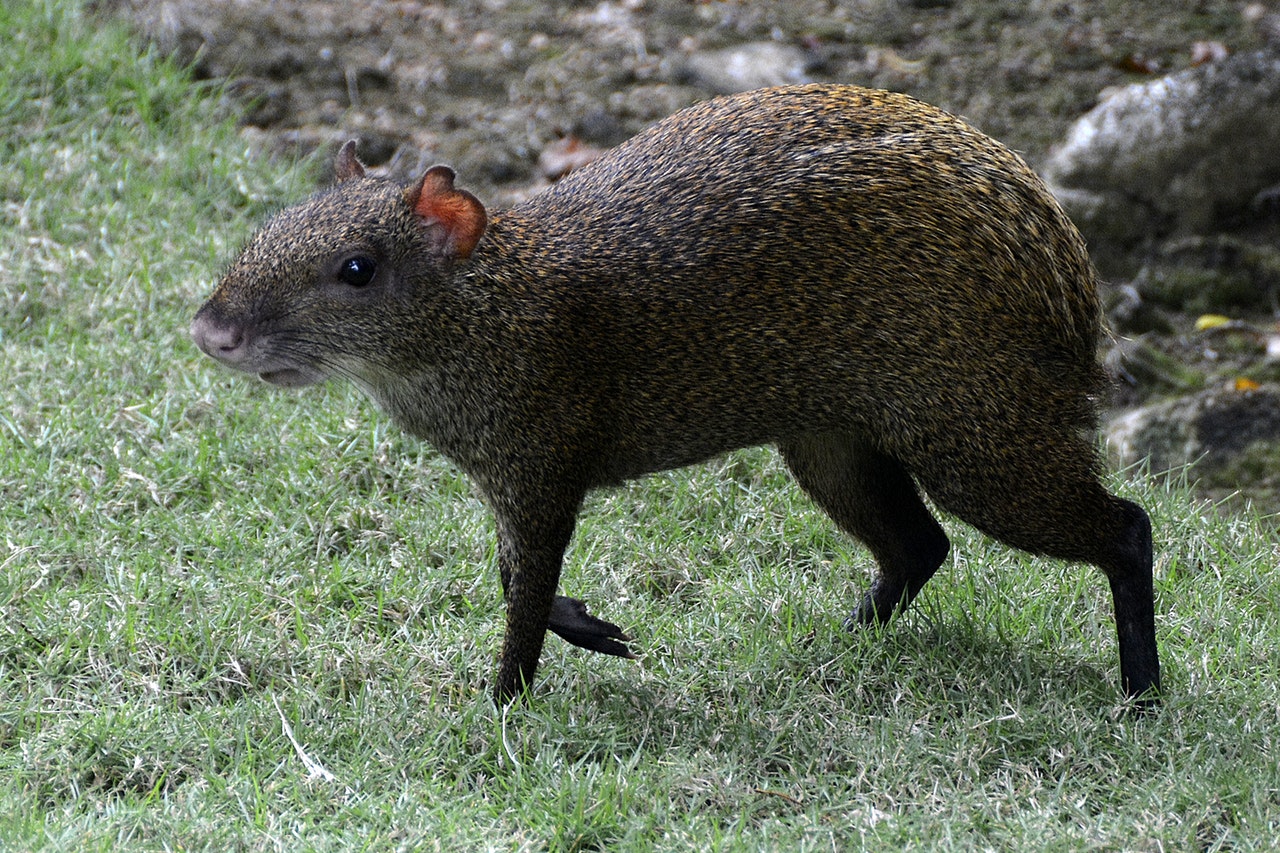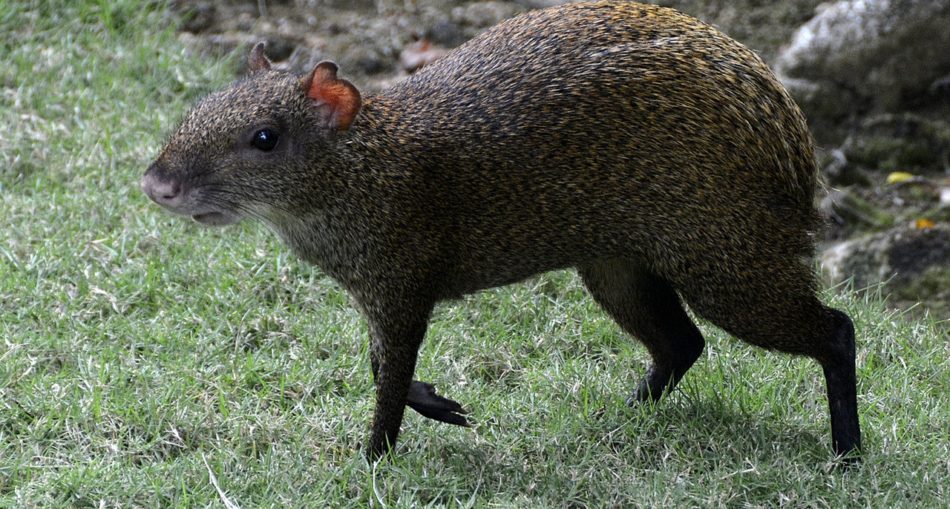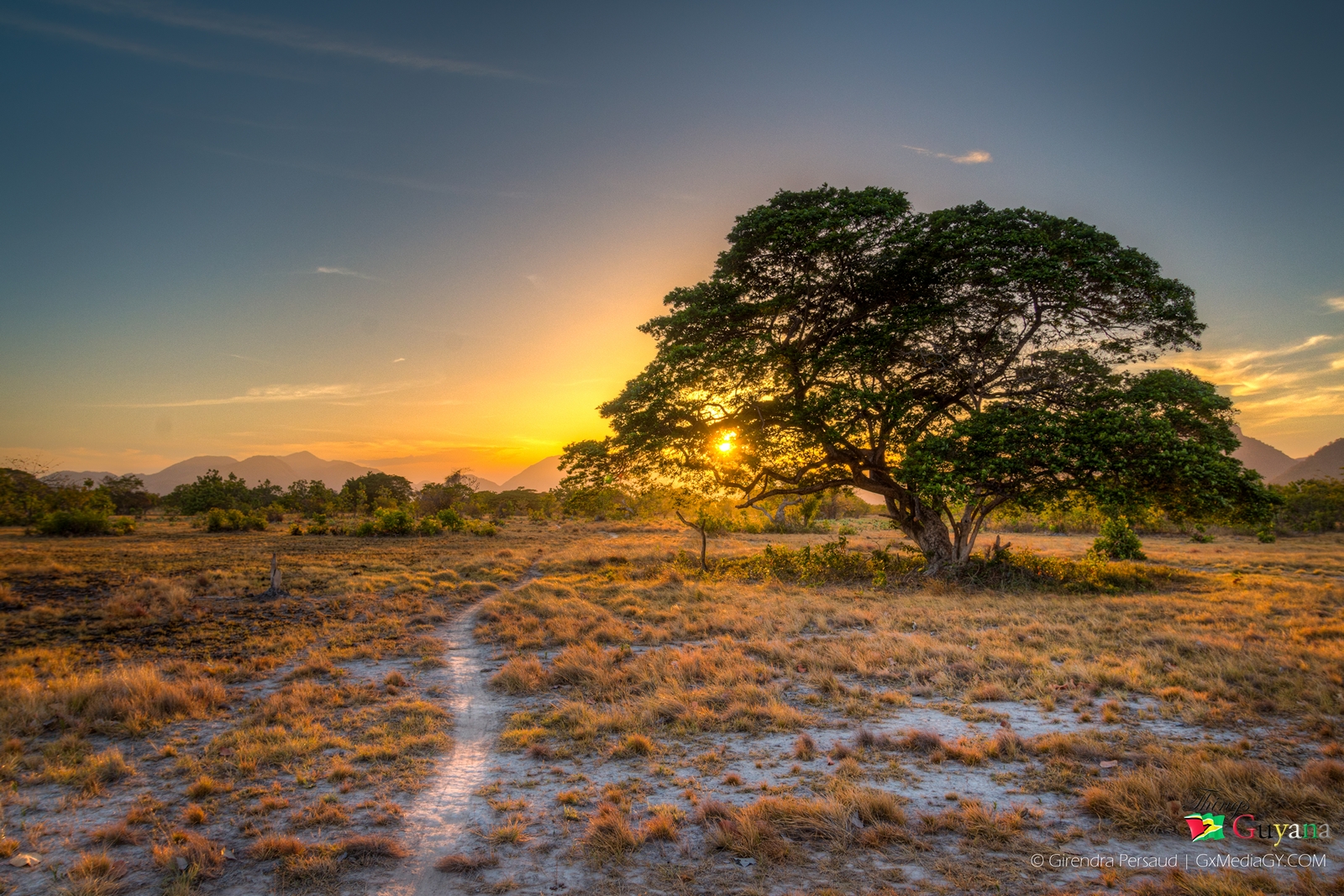Acouchis are rodents that belong to the family Dasyproctidae from the Amazon basin. They are generally smaller than agoutis and have very short tails (5 to 7 cm), while agoutis lack tails. For this reason, the acouchis are also called tailed agoutis. There are two species of acouchi, the red acouchi (M. acouchy) in the Guianas of Amazonia and nearby parts of Brazil, and the green acouchi (M. pratti) in western Amazonia. They differ in coloration and characteristics. A remarkable thing about the red acouchi is the behavior of burying seeds, this helps in the dispersal of seeds of many tree species.
Acouchis are rodents that belong to the family Dasyproctidae from the Amazon basin. They are generally smaller than agoutis and have very short tails five to seven (5-7 cm), while agoutis lack tails. For this reason, the acouchis are also called tailed agoutis. There are two species of acouchi, the red acouchi (Myoprocta acouchy) in the Guianas of Amazonia and nearby parts of Brazil, and the green acouchi (Myoprocta pratti) in western Amazonia. They differ in colouration and characteristics. A remarkable thing about the red acouchi is its behaviour of burying seeds which helps in the dispersal of seeds of many tree species.

The Acouchi – Image Source: https://www.pexels.com/photo/acouchis-agouti-animal-creature-461018/
Features Of The Red Acouchi
- Colouration – Red acouchis are dark chestnut-red or orange on the sides and legs. Their mid-back and rump are black or a very dark shade of red. Areas around the mouth and eyes, as well as behind the ears, are almost naked. The whiskers are well developed and black in colour.
- Feet – They have long limbs, the forefeet have four toes and a vestigial thumb with a claw, and the hind feet have three large elongated toes. These toes have hoof-like claws. They have black soles of the bottom of their feet.
- Rump – The mid-back and rump are covered in glossy black or dark red hairs. Some may have an olivaceous appearance. Rump hairs are not banded, which distinguishes them from their close relative the green acouchis. Rump hairs are long and straight, hanging over the tail region.
- Tail – Red acouchis have a slender, short tail, which is white underneath as well as at the tip. The tail is often held up, exposing the white underside.
- Length & Weight – Red acouchis range in total length from 386 mm to 468 mm. With masses between 1.05 kg to 1.45 kg.
Scientific Classification Of The Red Acouchi
Red Acouchi – Myoprocta acouchi [Scientific name]
- Kingdom: Animalia
- Phylum: Chordata
- Class: Mammalia
- Order: Rodentia
- Family: Dasyproctidae
- Genus: Myoprocta
- Species: M. acouchi
Habitat Of The Red Acouchi
The red acouchi is found in the Guyana subregion of the Amazon biome, including Guyana, Suriname, French Guiana, and Brazil, east of the Rio Branco and mainly north of the Amazon, with a few records from south of the Amazon. Isolated populations may be found in Colombia and the upper Rio Vaupes. They live in dense undergrowth in lowland forests and are usually found around fallen trees that are used as runways. Males prefer the open forest while females prefer a closed habitat. At night the red acouchis rest in nests of leaves, usually inside a hollow log. Rarely they can be found using burrows made by other species. When using these burrows, they will plug up any entrances which are not in use, with leaves.
Diet Of The Red Acouchi
Red acouchis are herbivorous, eating mainly fruits, nuts, seeds, and the cotyledons of seedlings. They are known for burying seeds in the forest floor for use during the dry season, when food is scarce.
Reproduction Of The Red Acouchi
The red acouchi’s courtship may be highly ritualized, similar to their close relatives in the genera Dasyprocta and Agouti. What is known about the courtship of red acouchis is that males will mark the ground with anal glands when pursuing females. This is done by dragging the hindquarters across the ground. They will also follow females around with the front legs trembling and emitting a high-pitched sound. When aroused, the hair on the back and flanks will stand up and go back down suddenly. Occasionally males will also splash females with urine. Males are fertile year-round, while females go into anestrus during the summer. The oestrous cycle for red acouchis averages about 42 days. The gestation period averages 99 days.
Young: The number of offspring produced in a single litter is from 1 to 3 young with an average of 2. The young will nurse for 2 to 3 months before becoming fully weaned. Young of both sexes will become sexually mature at approximately 304 days. Post-partum estrus can occur but females will usually mate after the young are fully weaned.
5 Facts About The Red Acouchi
- There is little documentation of the longevity of the red acouchi, the longest living captive animal lived over 10 years.
- Young red acouchis are precocial. Even so, they will remain sheltered inside a burrow until they are several weeks old. The mother returns to the nest burrow to nurse the young. Male red acouchis do not help with raising young.
- They are diurnal and move about on the forest floor in a characteristic crouched run.
- When alarmed, red acouchis stomp their hind feet and emit a whistle. They also emit a series of high-pitched sounds, including a screech-like squawk.
- Red acouchis can be detected by listening for the gnawing sounds they make while eating seeds and nuts.
Red Acouchi In Guyana
The red acouchis are indeed special animals. Their tails tell them apart from the agouti. In addition, their rump hairs are not banded, which distinguishes them from their close relative, the green acouchis. They are known for burying seeds in the forest floor for use during the dry season when food is scarce. Their habit of burying seeds helps in the dispersal of the seeds of many tree species. Indeed, Guyana is privileged to have these clever little rodents.
Article References:
- https://en.wikipedia.org/wiki/Red_acouchi
- https://en.wikipedia.org/wiki/Acouchi
- https://animaldiversity.org/accounts/Myoprocta_acouchy/







